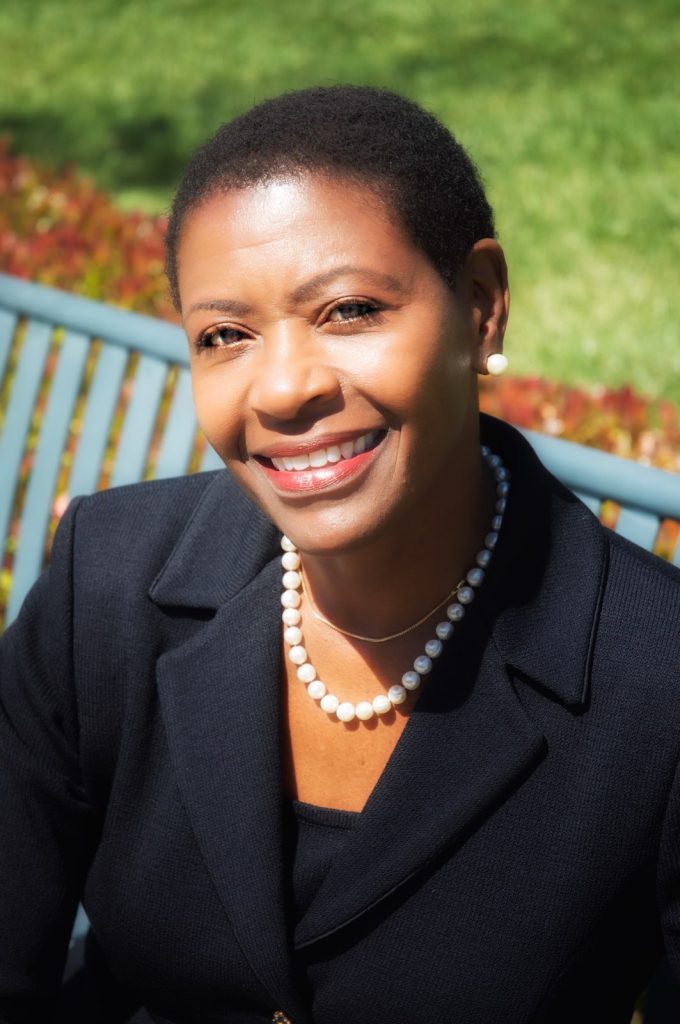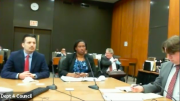Many people in Sacramento are rethinking our criminal justice system. So we decided to sit down with Contra Costa’s District Attorney, Diane Becton. During her long experience as a Superior Court Judge and now as Contra Costa’s DA, Becton has developed a reform agenda that is having a huge impact on her county.
The initial feedback is looking good in terms of the goal for a more just society and reduced crime rates. I thought her experience would be of a real interest to those of us in Sacramento who also feel that we need changes here.
We have a new District Attorney, a new County Sheriff, and now with the state’s criminal realignment, Sacramento does seem to view reforming our criminal justice as a necessary thing to do.
I think you’ll find that the question and answers can provide real insight on what we should do here.
I’d like to hear about the reform program. Can you share some of your overall rethinking of the criminal justice system—some overarching principles that you have?
Sure. Prosecutors wield a tremendous amount of power in terms of the outcomes that we have in the criminal justice system. Prosecutors get to decide and give direction to what gets charged, to who gets charged. We make important recommendations around plea-bargaining and around sentencing.

A lot of our focus, I would say the last 30 or 40 years, has really been on punishment as a tool to community safety or public safety. And I think we have an opportunity now to recognize that if we focus singularly on incarceration as a one-size-fits-all solution to public safety, then we’re going to overlook some of the many other valuable ways that we can shift the narrative and also make our communities safer.
I think a good example of that is with our Youth Restorative Justice Diversion Program. We’d never had a program like this in Contra Costa County. So we were very excited to be able to get that funding to be able to establish a pre-filing diversion program that really was focused on the needs of our youth, centered with victims’ voices.
Victims have an opportunity to express the harm that was caused to them, but also we give our kids an assessment of what they need to make different decisions—and really a rigorous program that allows them to then be in a better position to be successful and to be hopeful about the future.
So it’s a different way of thinking about criminal justice. We could certainly try to punish everyone that comes into our door, but what if we try to give people the tools that they need to be able to move forward with a different kind of outlook? And that’s one of the tools that we are using here in Contra Costa County.
How are we using data in a different way?
Well, this is where I’m very excited. I think we’ve heard a lot of conversation about the importance of data-driven decision-making and in Contra Costa County. And the reason this is such a priority for me going forward in 2023 is that it has been a very, very difficult process for us to extract data from our system to be able to use it in a meaningful way. We are working now on new tools and we have new opportunities that will help us improve what data we can capture so that it can better help us, internally with respect to our decision-making. It can also help us to evaluate the programs that we’ve already put in place around reform and fairness and equity to see how we’re really doing, whether we’re making any progress. And we want to use it as a tool to be able to improve and be more transparent with the public as well. I think focusing on data analysis—and not just looking at numbers, but also looking with a lens towards equity—is what I would say (is the difference). We can hopefully reduce some of the racial disparities, while we’re serving the interests of justice.
Do you have any examples of where the data has been useful in changing that lens?
Yes, that’s why I’m saying it’s my goal because it’s not a tool that I’ve had at my disposal in the past.
But we are now putting in place the systems and the tools that we need to be able to do what I just talked about. You hear people talk about data-driven decisions all the time, but if you can’t really extract your data and if you can’t ask questions of your system in a way that’s useful for you to be able to think about, well, where should we be focusing our resources? Where do we have significant gun violence in our community? Those are the kinds of questions, if I can answer internally, we can better focus our attention in terms of public safety.
We had some interesting data here in Sacramento where the city police chief conducted a survey broken down by racial components. It was just shocking the disproportionate amount of African Americans that were arrested and the number of searches, etc. It was over the top in terms of the amount of policing and who are getting arrested and potentially prosecuted. You have a system unfairly arresting certain people, then if the DA is prosecuting the same people that were unfairly arrested, we have a situation where the whole system is not working.
You’ve just pointed out another really important way in which data can help us to take a look using an equity lens to say, How are we affecting our communities? So if we get data that shows that we have a disproportionate number of people in our community affected, not only by what happens in our office, but what is being brought into our office, then we need to at least have those conversations to begin to think about what can we do in the future? What can we change? And we know, especially with the studies that you’ve just mentioned, there’s legislation that’s now being proposed. There are conversations, not just going on here in California, but all over the country, about those very issues and what should we be doing differently, for example, around stops and who gets stopped or police stops for non-public safety reasons. Like who should be responsible for that? If we don’t have the data, if we don’t raise the issues, if we don’t look at how we’re affecting our community, then we can never really have these important conversations.
And that’s why I think the data is so important.
The third area is your thoughts on the path to violence, how that changes your thinking and changes what should be done, what the DA should be doing in their community.
I think when we start focusing on a comprehensive violence reduction program, part of that conversation, obviously, is holding accountable those who are committing violence in our community.
Looking at the most recent 2022 report of the California Penal Code Committee, we see highlighted an issue around clearance rates. If we have crimes that are committed in our community, especially violent crimes (and my focus is really primarily going to be on non-fatal shootings), it means that we have a whole group of people in our community who have suffered from the trauma of violence, but who are not getting services, victim services, referrals, resources that they may need to heal from that trauma. And as we so easily say: ‘Hurt people tend to to hurt people.’
And so it really a contributing factor to the continuous cycle of violence within our communities. And I think that if we can focus our attention on analyzing what those drivers of violence might be and who might be the recipients of that violence, to make sure that those victims are getting served as well, then we have an opportunity to try to break those cycles.
Can you talk a little bit about the problem of people with mental health problems or drug problems going into the criminal justice system, and in your mind, what is a more effective approach?
There are certain societal problems: the number of people who are unhoused, the number of people who suffer from mental illness and drug addictions. And I think we’ve learned—I hope we’ve learned—that we can’t prosecute our way out of those problems.
In Contra Costa County, I initiated a policy three years ago to say people who are apprehended with a small amount of drugs are users, right? They have a drug addiction and it was not really a successful outcome to have that person cycle through our criminal justice system. (Because) there was really nothing at the end of that process that would really be useful to helping that person to break their addiction. So instead of criminalizing those cases, we contact the individual and give them referrals to health care, to treatment, so that they could help hopefully take advantage of that and be able to make different decisions in the future.
So that’s the approach that we have taken. So we want to be able to try to intervene and break those cycles as opposed to criminalizing people for those kinds of issues.
That’s my opinion about it.
One of the criticisms of the program that you have is that you’re being soft on crime. What has been the impact, in terms of crime rates and then the impact on the community, with some of these programs that you’ve put in place?
I think if you look at the data and the statistics, we can confirm that the crime rate has continued to drop. Particularly here in Contra Costa County, and of note I think it was the year 2020, even when all around the country violent crime was going up, Contra Costa County was one of the four counties in California where we actually saw a reduction in our violent crime. I think it’s a false narrative to say that we’re soft on crime and that this program is somehow a driver of crime. Because the data and the statistics tell a different story.






Be the first to comment on "Criminal justice reform: A talk with Contra Costa DA Diana Becton – and what Sacramento might learn from her"